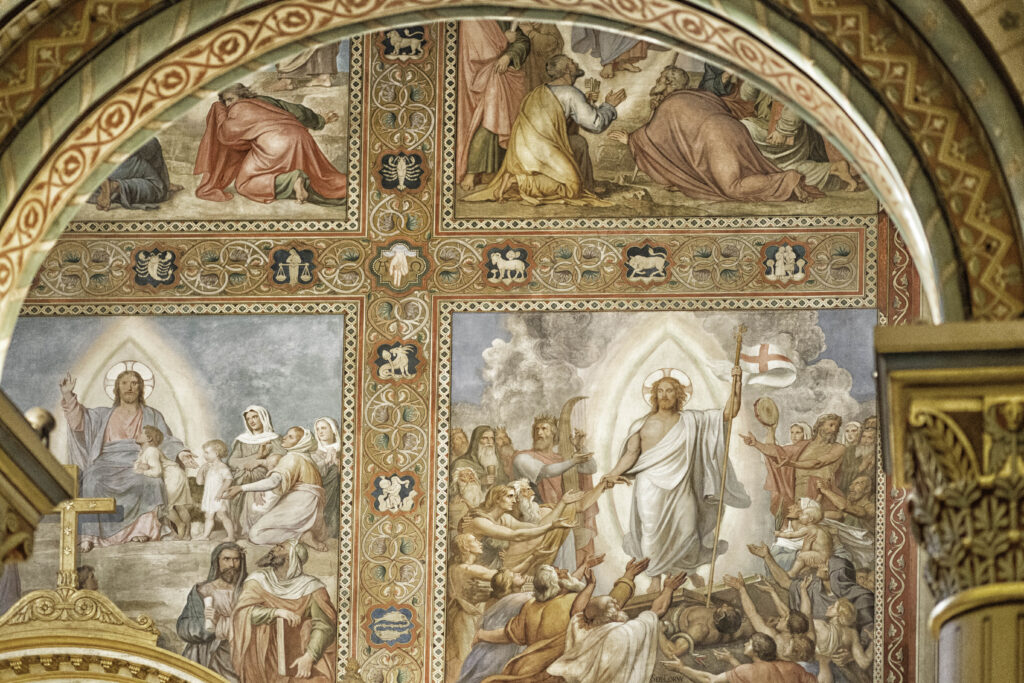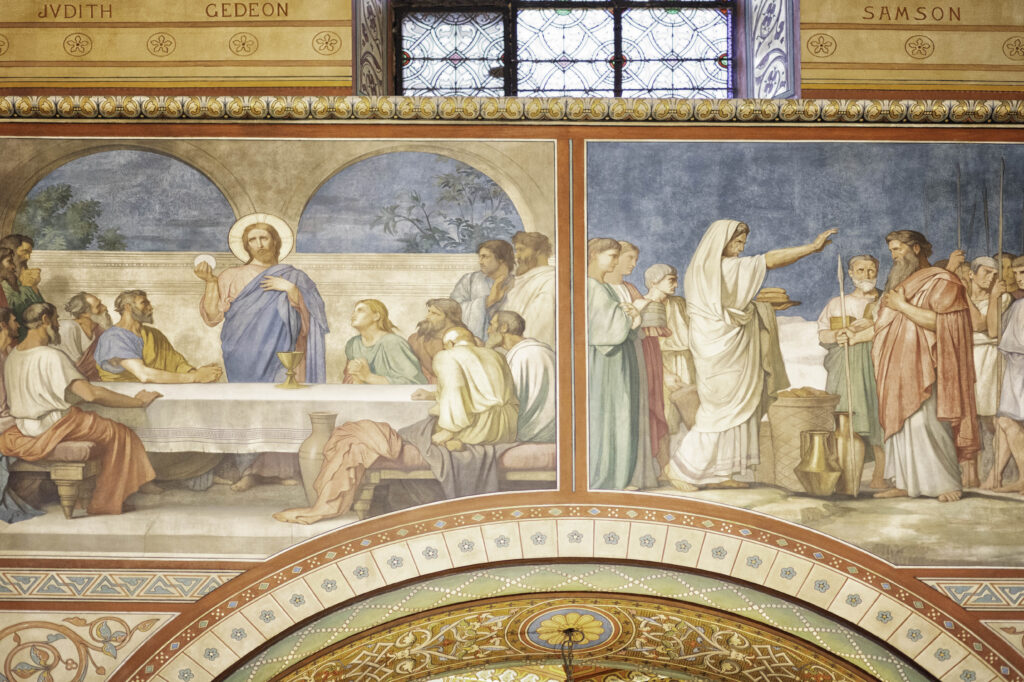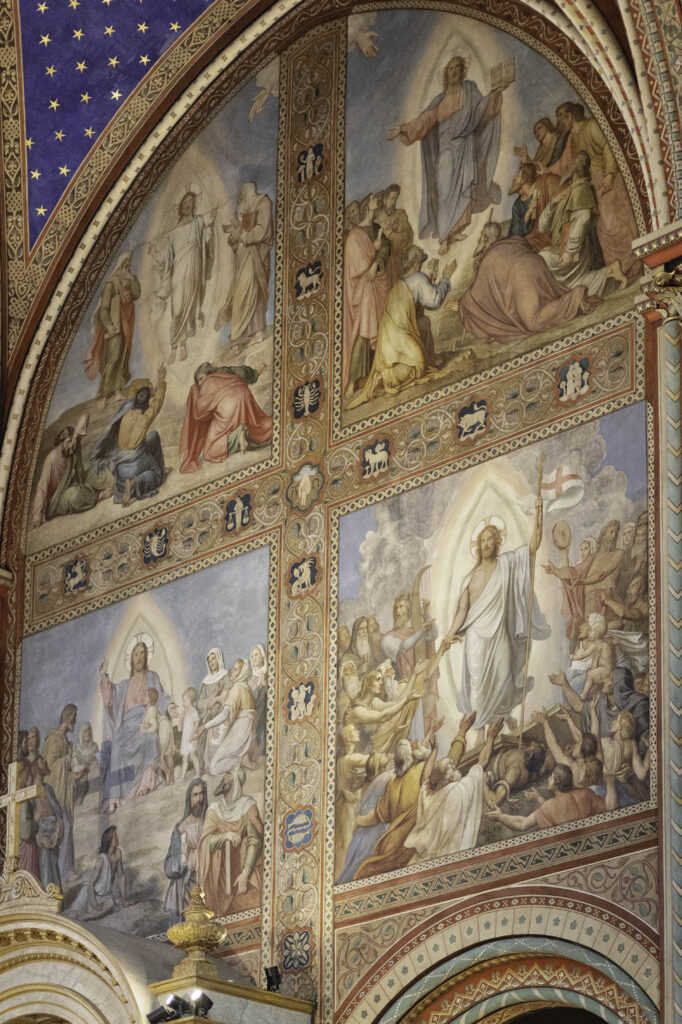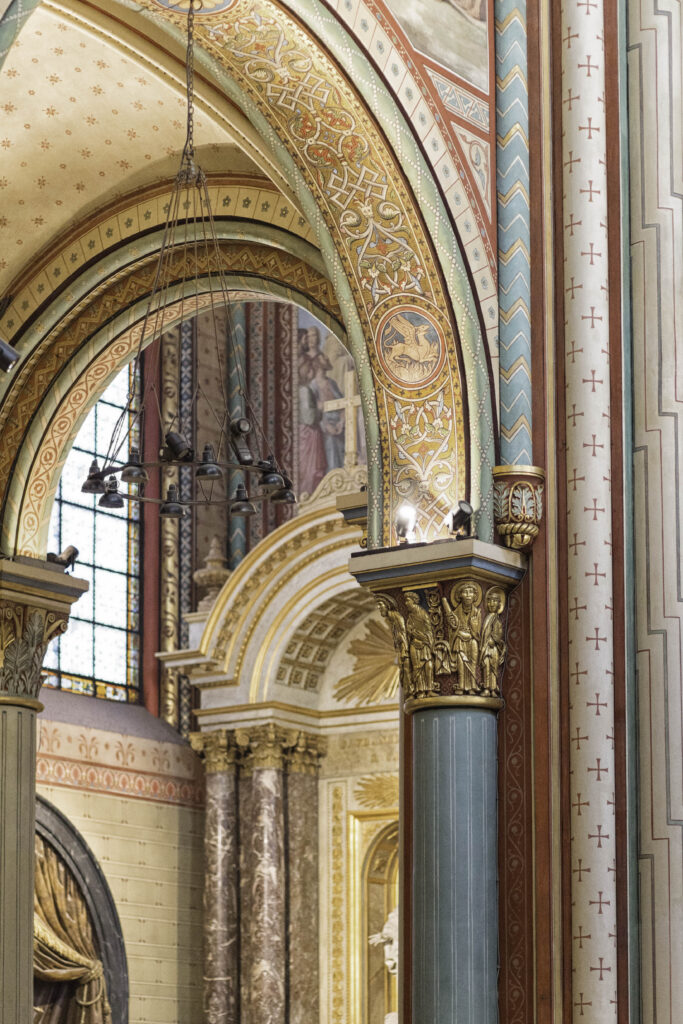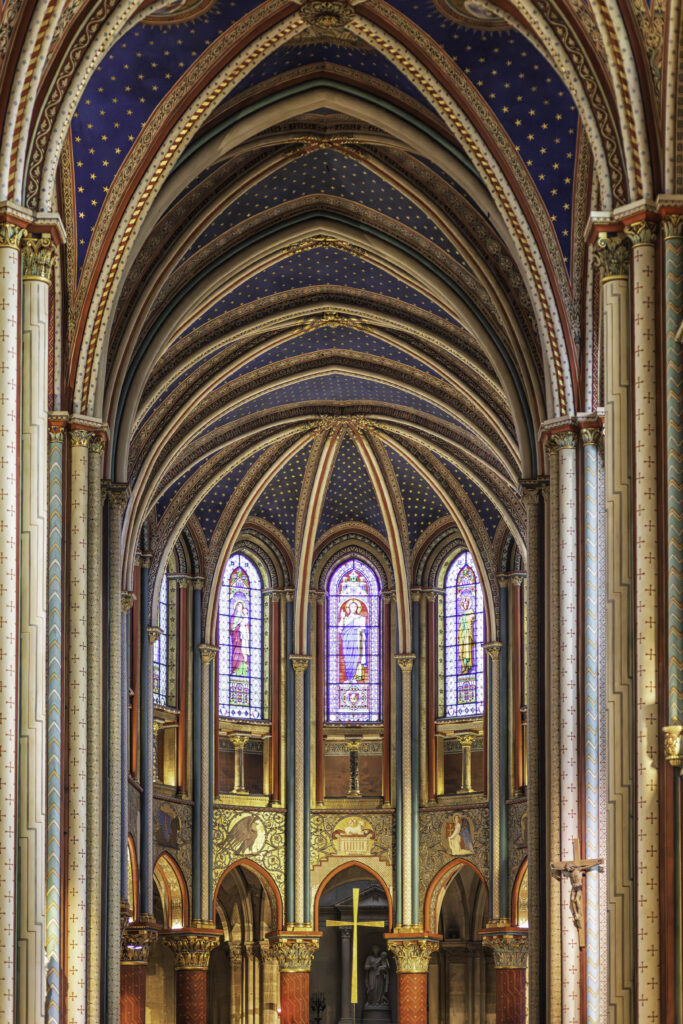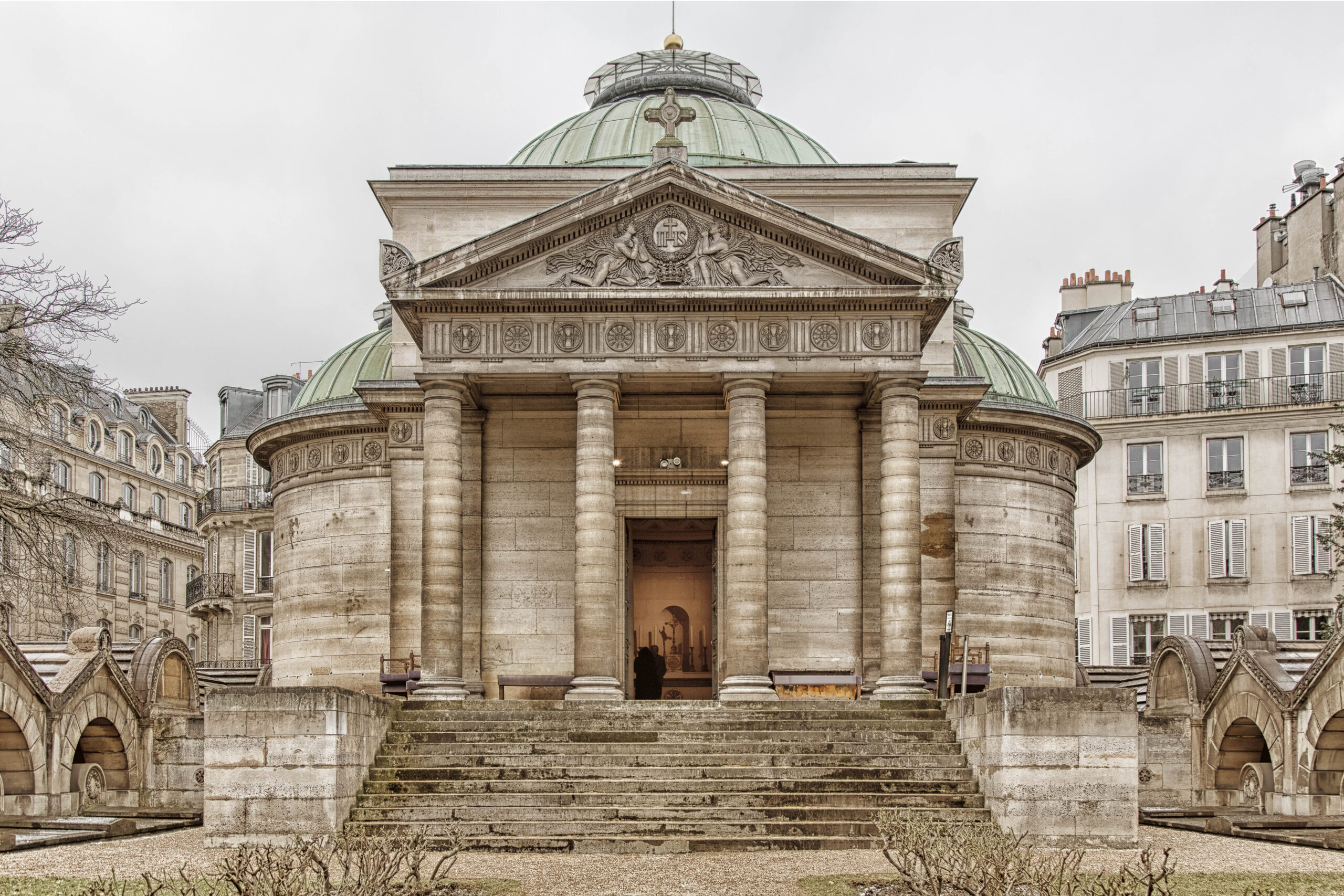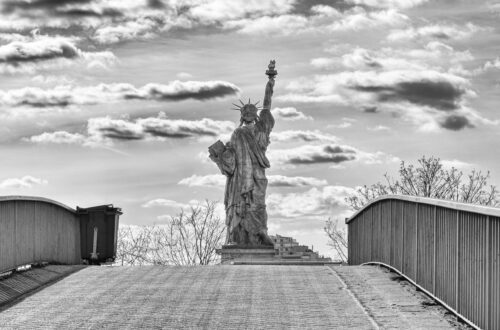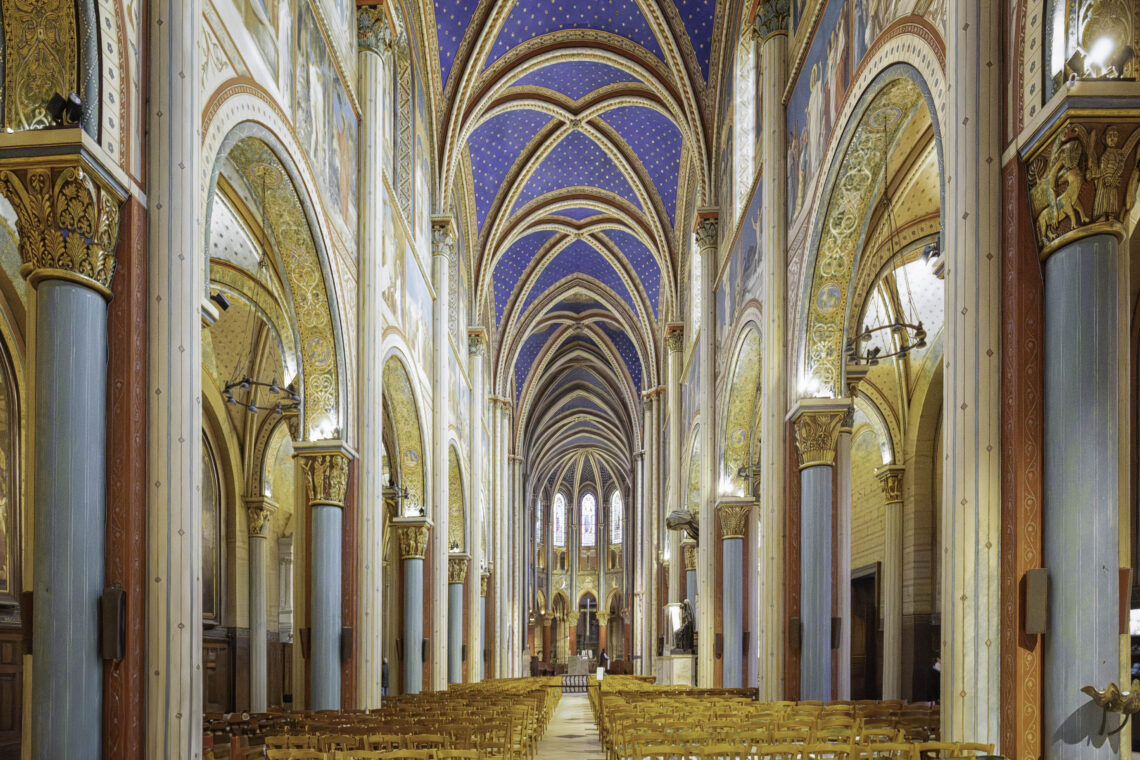
A Timeless Journey Through Church Saint Germain des Prés: History, Restoration, and Enchantment
Bonjour my dear friends!
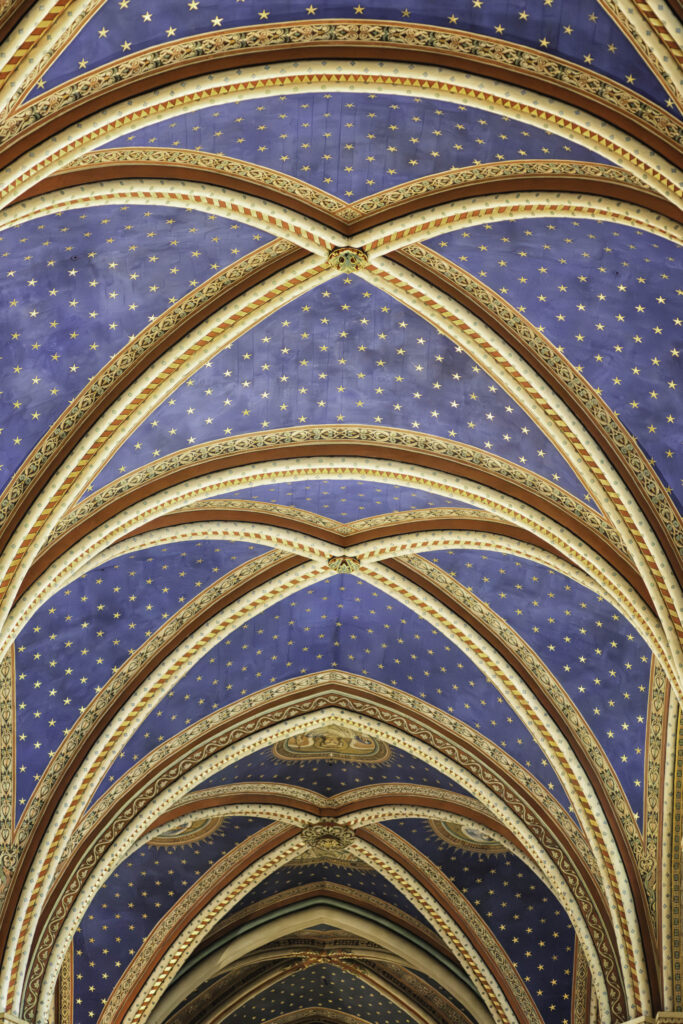
Today, after our meanderings through the enchanting streets of Paris, I’m thrilled to unveil glimpses of one of the city’s most venerable treasures – nestled within the pulsating heart of one of its most vibrant quarters. Following an extensive restoration campaign launched in 2015, this esteemed edifice has been lovingly restored to its former glory. Stepping inside a few weeks ago, we were awestruck by its resplendent beauty.
But before we dive into the present, let’s journey back through time and place this architectural marvel within its historical context.
The Saint-Germain-des-Prés Abbey traces its roots to the 6th century, commissioned by none other than Childebert I, son of Clovis I. The church was erected to enshrine a revered relic, the stole of Saint Vincent. Completed in 558 under the auspices of Germain, Bishop of Paris, the church became the final resting place of the Merovingian Kings, marking the genesis of its illustrious legacy.
Throughout the Middle Ages, Saint-Germain-des-Prés flourished not only as a bastion of faith and culture but also as a bustling marketplace, hosting an annual fair that drew merchants and traders from across Europe.
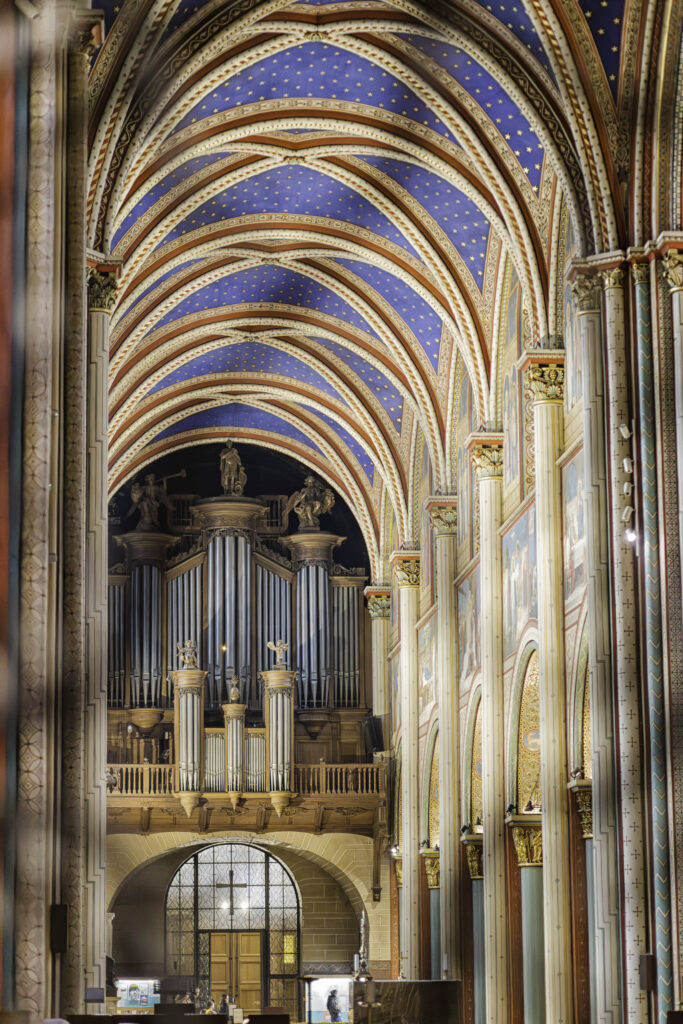
It anchored a vibrant neighborhood. In 1689, the renowned Comédie-Française found its home on the rue des Fossés des Saint-Germain-des-Prés. Meanwhile, the inception of Paris’s first café in 1672, courtesy of an enterprising Armenian named Pascal, added another layer of life to the neighborhood’s tapestry.
Despite enduring significant damage during the upheavals of the French Revolution, the abbey underwent a magnificent rebirth in the mid-19th century under the skilled hands of artists Hippolyte Flandrin and Alexandre Denuelle. This juxtaposition of 19th-century opulence within a medieval framework renders it a truly unique architectural gem.
By the mid-19th century, Saint-Germain-des-Prés had evolved into a coveted sanctuary for the artistic elite, nurturing a flourishing literary scene that reached its zenith after World War II. The legendary Café de Flore, Brasserie Lipp, and Les Deux Magots became hallowed sanctuaries where luminaries like Jean-Paul Sartre and Simone de Beauvoir held court, shaping the intellectual landscape of the era.
As the extensive restoration draws to a close in 2024, I invite you to embark on a journey of discovery or rediscovery, allowing your eyes to twinkle like stars beholding this exquisite jewel of Parisian heritage.
Until we meet again, my dear friends!
Caroline
